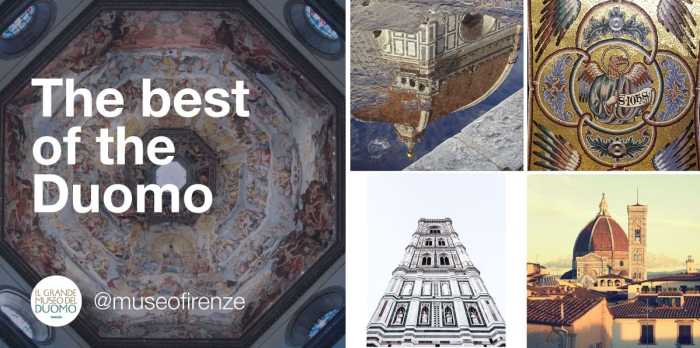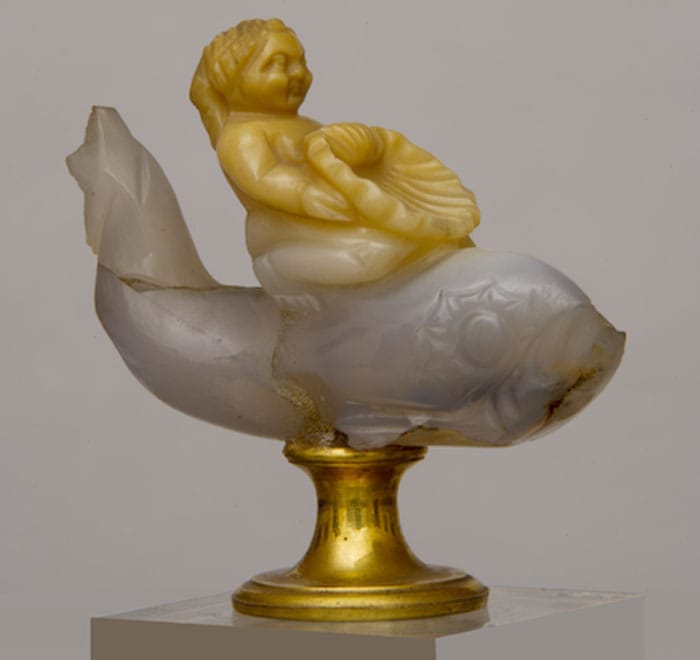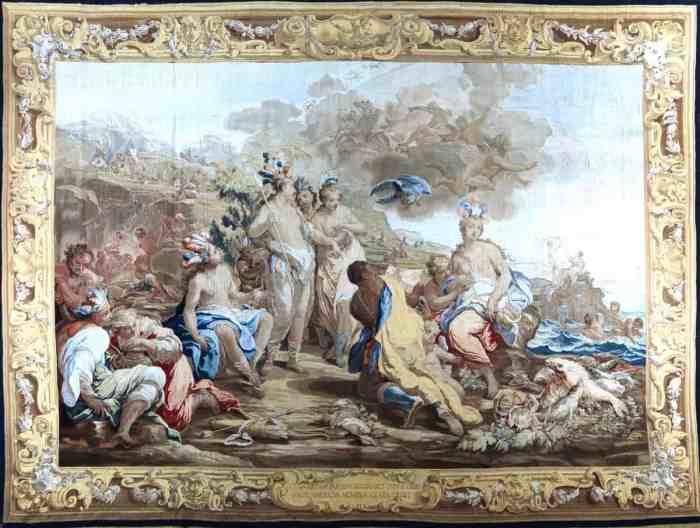Every year, I publish an updated list of the temporary exhibitions in Florence for the coming year. In 2016, changes to the management of state museums has made for little advance notice of major exhibits, which I hope will be announced as the year proceeds, though the Uffizi, Pitti and Strozzi have released their plans so far. This list is in chronological order.

2016 Exhibitions in Florence
Florence, Capital City 1865–2015: The king’s gifts and collections
November 19 2015 – April 3, 2016, Galleria d’arte moderna, Palazzo Pitti

Celebrating the 150th anniversary of Florence’s designation as the capital of a newly united Italy, the exhibition is devoted principally to the works of art and furnishings acquired by King Victor Emmanuel II for his sumptuous Florentine residence in Palazzo Pitti during the years that he spent in the city.
Gran Ballo a Palazzo Pitti
28 November 2015 – Feb 2016, Palazzo Pitti, Costume Gallery
An exhibit to be held in the Salone da ballo of Galleria del Costume di Palazzo Pitti, that will celebrate and evoke the royal ball held here on November 28, 1865. The exhibit will include period clothing, musical notes, documents and dance cards in a collaboration between the Biblioteca Nazionale and the museums of Palazzo Pitti. Dance music of the time will be playing throughout.
The best of the Duomo
Jan 18 to Feb 12, 2016, Museo dell’Opera del Duomo exhibition space (free)

A show of the winning instagram photos from a Duomo photography contest held last year, in the new Museo dell’Opera del Duomo’s exhibition space (with free entry). Open daily from 4-6pm.
Carlo Portelli: A painter of some worth
14 December 2015 – 17 April 2016, Galleria dell’Accademia

The exhibition devoted to Carlo Portelli, is another monographic show about a lesser known artist, and another eccentric Florentine painter at the height of the 16th century. This Mannerist tirelessly searched for refined yet complex elegance, crowding numerous figures into paintings, and using bold foreshortening.
Federico Barocci Disegnatore
December 19 2015 to April 3 2016, Uffizi – Gabinetto Disegni e Stampe

38 drawings to understand the creative process of the Urbino-born 16th-century artist.
Guests at Palazzo Pitti: Adam Elsheimer’s Polyptych of the Holy Cross
Galleria Palatina di Palazzo Pitti, Sala delle Nicchie, February 24– June 5 2016
curated by Matteo Ceriana

In return for the loan of two works by Pontormo to the Städel Museum in Frankfurt, the Galleria Palatina will be temporarily hosting Adam Elsheimer’s Polyptych of the Holy Cross. The altarpiece, which once formed part of Cosimo II de’ Medici’s collection, will be accompanied by panels illustrating its history, dispersal and reassembly on the basis of archival documents.
He Made Sculpture of Wood, Which He Coloured. Painted Wooden Sculpture in 15th Century Florence.
Galleria degli Uffizi, March 21– August 28 2016
curated by Alfredo Bellandi with Marta Onali

Painted sculpture, in wood as well as in marble and terracotta, embodied the artistic primacy of sculpture throughout the first half of the 15th century. Showcasing a core of approximately fifty pieces, the exhibition sets out for the very first time to explore the history of painted wooden sculpture in Quattrocento Florence, a city in which the close proximity of painters’, sculptors’ and architects’ workshops was frequently responsible for the direction that an artist’s career and stylistic development would take.
From Kandinsky to Pollock. The Art of the Guggenheim Collections
March 19 to July 24, 2016, Palazzo Strozzi
A major exhibition bringing to Florence over one hundred masterpieces of European and American art from the 1920s to the 1960s, in a narrative that reconstructs the relationship and the ties between the two sides of the Atlantic through the lives of two leading American collectors, Peggy and Solomon Guggenheim.
Liu Xiadong is coming to Florence
April 22 to June 19, 2016, CCC Strozzina

The Chinese contemporary artist will be working in Florence in the period leading up to the exhibit, showing paintings, drawings and photographs. The main themes of the work on display will be the cities of Florence and Prato and the Sienese countryside, which the artist is observing and experiencing through direct contact with the local people, but with a special focus on the local Chinese communities.
Jesters, Villains and Players at the Medici Court
Galleria d’arte moderna di Palazzo Pitti, Andito degli Angiolini, May 9– September 11 2016
curated by Anna Bisceglia, Matteo Ceriana and Simona Mammana

Roughly 30 17th and 18th century works, primarily from the Galleria Palatina’s storage facility, set out to illustrate the bizarre figures that are such a recurrent feature of the Medici collections. These “genre” scenes allowed artists to illustrate – naturally within strictly defined bounds and frequently with educational or moralising intent – those comic aspects of social and court life that were normally held to be base and unseemly. In this context we see the limelight being shone on such marginal and deviant figures as jesters, ignorant or grotesque peasants, dwarves and gamblers both licit and illicit. Putting it in a nutshall, “genre” painting became the medium that allowed art to seek its inspiration in the real world.
A Look at the 20th Century. Italian artists’ drawings from the interwar years
Gabinetto Disegni e Stampe degli Uffizi, Sala Edoardo Detti, May 17– September 4 2016
curated by Marzia Faietti and Giorgio Marini
Some thirty-seven drawings and prints dating roughly from between 1900 and 1930, most of which have never been displayed in public before, include figures, faces and self-portraits oozing with expressive depth and sparking pyschological interaction between the artist and the sitter, and between the sitter and the observer. These works not only reveal the complexity of the first thirty years of the 20th century, they also appear to herald looming tragedy and drama.
Splendida Minima. Precious small sculptures in the Medici collections
Museo degli Argenti, June 21– November 2 2016
curated by Valentina Conticelli, Riccardo Gennaioli and Fabrizio Paolucci

The Uffizi houses the most important collection in the world of small sculptures in semi-precious stone carved chiefly in the Hellenistic and Roman eras, an extremely rare area of glyptic art. The skill, lost during the Middle Ages, was rediscovered and given a new lease on life in the Renaissance period. This exhibition – the first ever to explore this specific theme – not only brings together the entire Medici collection of micro-sculptures but also showcases other works of sculpture carved in precious materials in such a way as to offer the visitor comparisons capable of highlighting the unique chromatic, technical and stylistic features of these objets d’art.
Al Weiwei
Palazzo Strozzi, September 22 2015 to January 22 2017
Contemporary art leaves the basement Strozzina and heads in to the piano nobile with this major exhibition of works by the controversial Chinese artist Al Weiwei. Ai will bring an exhibition to Palazzo Strozzi, where a broad selection of his work will testify to the strength and vivacity of his oeuvre. Ai Weiwei’s work will be designed in dialogue with the history and architecture of the Renaissance, offering visitors a powerful new take on the space as a whole. Ai Weiwei will also produce a series of installations specifically designed for the various areas in Palazzo Strozzi, thus the palazzo will be structured for the very first time as a single unit, embracing the Courtyard, the Piano Nobile and the Strozzina.
Real Time and the Time of Reality. Clocks at Palazzo Pitti from the 18th to the 20th c
Galleria d’arte moderna di Palazzo Pitti, Sale del Fiorino e della Musica, September 13 2016 – January 8 2017
curated by Simonella Condemi and Enrico Colle

80 of 200 clocks in the Palazzo Pitti’s collection will be on display, testifying to the passage of time for those whose daily lives were played out in the Florentine palaces of the 18th and 19th centuries. The selection of these singular objets d’art will allow visitors to admire the astonishing technical and artistic quality of these timepieces in the various different forms and formats in which they were produced, revealing their duality comprising, on the one hand, an often sophisticated and complex mechanism, and on the other, a case which started out life as a cover for the mechanism but which gradually turned into a work of art in its own right.
Discoveries and Massacres. Ardengo Soffici and Impressionism in Florence
Galleria degli Uffizi, September 27– January 8 2017
curated by Vincenzo Farinella and Nadia Marchioni

The first ever monographic exhibition to be devoted to Ardengo Soffici (1879–1964) will provide visitors with an opportunity to explore the figure of this painter, writer and art critic who played such an active role in his time, coming into contact or clashing with the Italian and European art scene of the time. The title of the exhibition, Discoveries and Massacres, alludes to the title of Soffici’s collected writings, published in the early 20th century and acknowledged today as a crucial contribution to the renewal of Italian art. The exhibits on display (from Segantini, Cézanne, Renoir, Picasso, Degas, Medardo Rosso and De Chirico to Carrà and beyond, in addition to Soffici’s own work), chosen on the basis of Soffici’s explicit predilections and aversions, will be accompanied by critical pieces from his writings on art, accompanying the visitor on a voyage of rediscovery to explore one of the most fertile and productive interpretations of the origins of contemporary art, with its crucial “discoveries” and equally drastic “massacres”.
The Four Continents. Florentine tapestries to cartoons by Giovanni Camillo Sagrestani
Galleria Palatina – Sala Bianca, September 27 2016 – January 8 2017
curated by Caterina Chiarelli and Daniele Rapino

The exhibition will comprise four dazzling tapestries from the 1720s woven to designs by the painter Giovanni Camillo Sagrestani. One of the finest sets of tapestry ever to emerge from the Medici manufactory, the series was made by the most skilled weavers employed in the workshop at the time, including Victor Demignot who trained in Flanders. The tapestries depict the four continents, their bizarre attributes and fanciful inventions revealing the way in which the 18th century interpreted the world’s different cultural and historical identities. The sumptuous and extremely elegant composition, worthy of the finest contemporary French work, was enormously appreciated at the time, in particular on 20 January 1739 when the set was used as part of the city decorations to mark the triumpal entry into Florence of the new Grand Duke Francesco II of Lorraine and his wife Maria Teresa, the future empress.
Colour’s Revenge Over Line. Venetian drawings from the Ashmolean Museum and the Uffizi
Gabinetto Disegni e Stampe degli Uffizi, October 18 2016 – January 8 2017
curated by Marzia Faietti, Giorgio Marini and Catherine Whistler

The exhibition will highlight the history of the development of drawing in Venice and its hinterland between the age of Titian, Veronese and Tintoretto and the era of Canaletto, a period during which figurative work was tightly bound to the dynamic of the artist’s workshop. Visitors will be offered an interesting opportunity to explore the specific expressive vocabulary of Venetian drawing through the comparison and contrast of work from the collections of the Uffizi and of Oxford University’s Ashmolean Museum.
Sign up to receive future blog posts by email
Alexandra Korey
Alexandra Korey aka @arttrav on social media, is a Florence-based writer and digital consultant. Her blog, ArtTrav has been online since 2004.
Related Posts
January 30, 2024
Florence Museum News 2024
January 5, 2024
The Architecture of Michelangelo’s Laurentian Library
July 19, 2023




